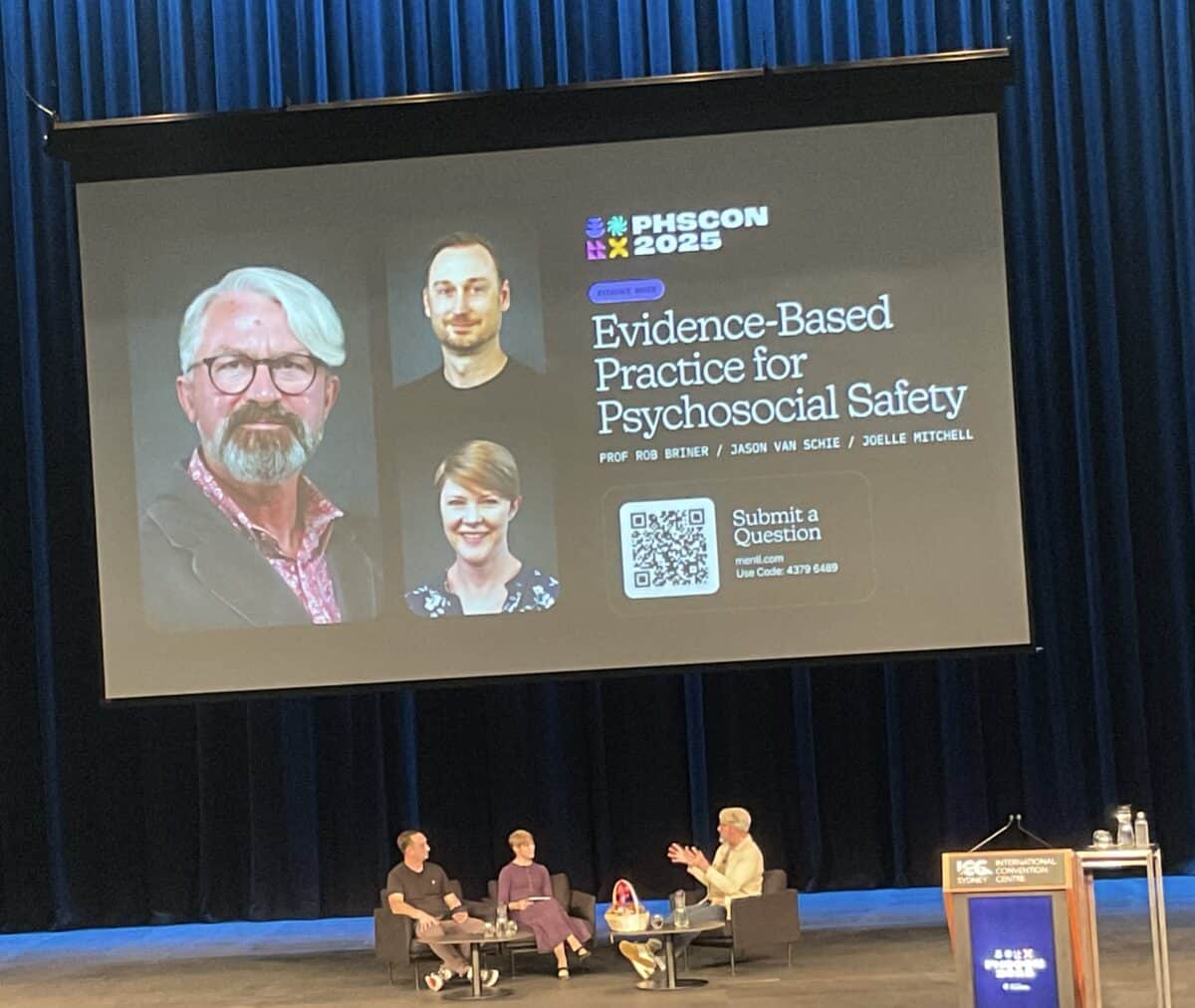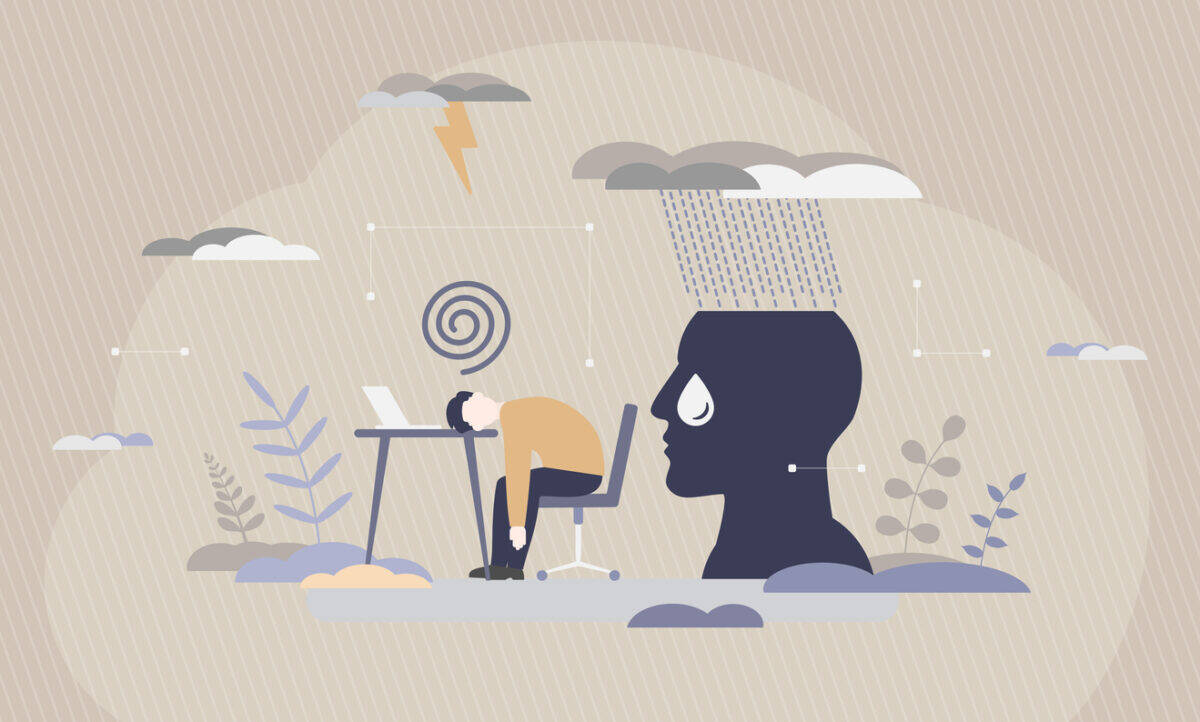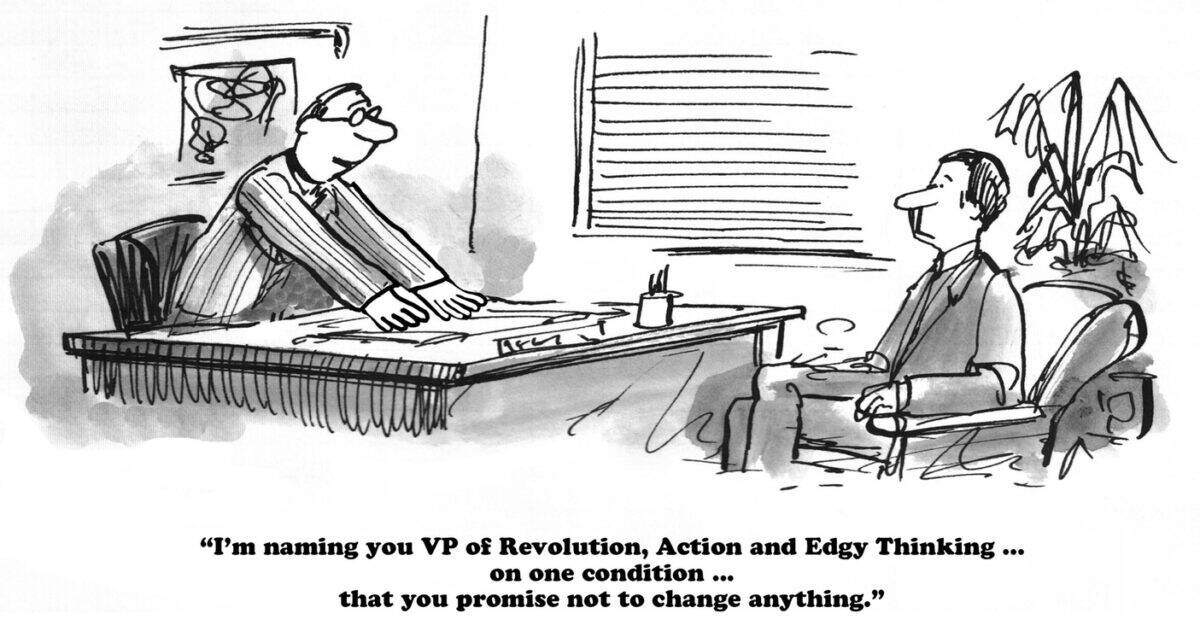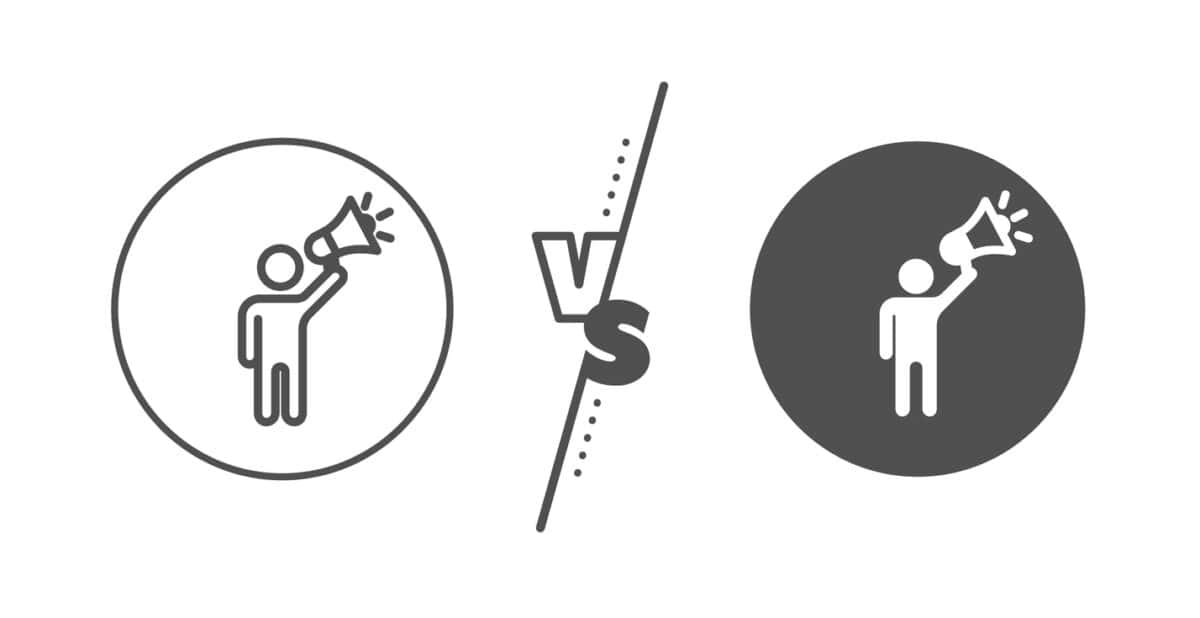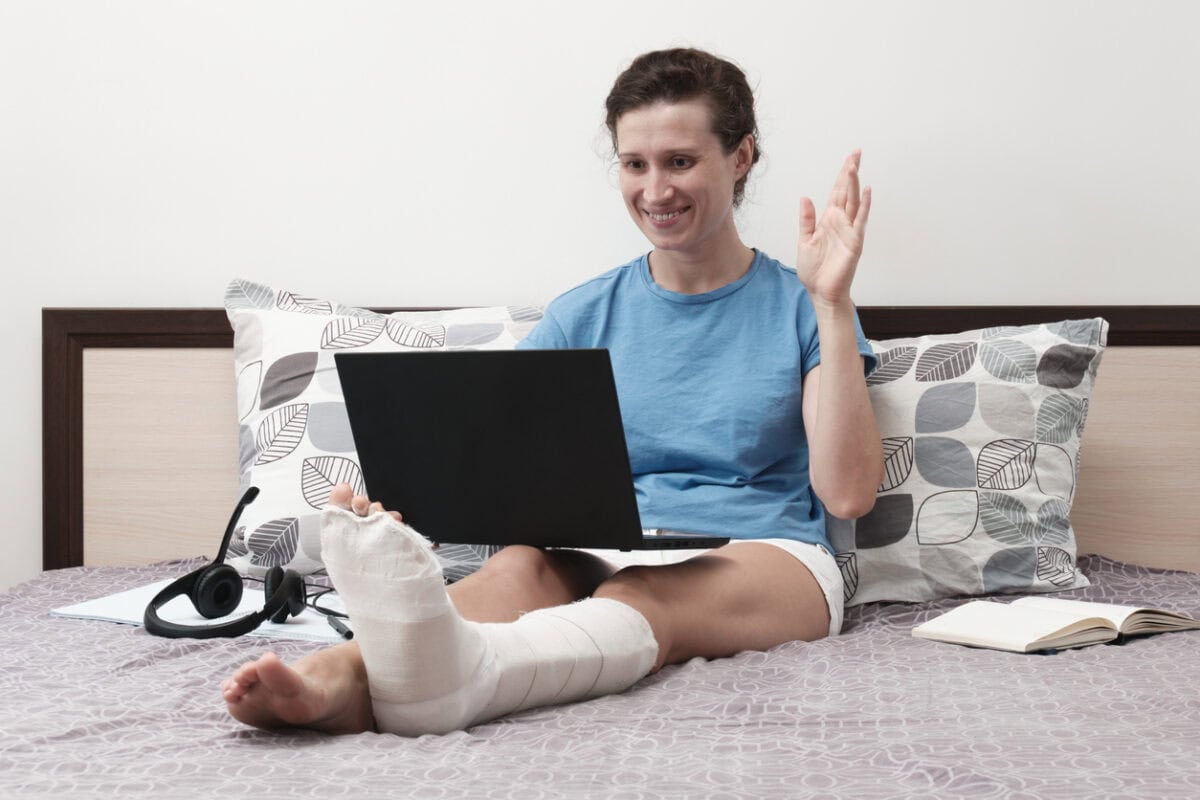Canadian Mary Ann Baynton speaking about the Canadian Mental Health Standard at a recent conference in Sydney was the first speaker to mention the importance of consensus – an important element of workplace negotiation often missing from how consultation is applied.
Category: mental-health
Rob Briner sets the agenda at a psych health and safety conference
The 2nd (annual) psych health and safety conference commenced with what was almost a summary of the current play in the workplace psychosocial/psychological sphere. This year, the venue is bigger, and the number of delegates in person and online appears much bigger. But the most significant feature is the blending of different disciplines under the psych tag.
Rob Briner kicked it off
How influential is ISO45003?
The second in our series of occupational health and safety questions to an artificial intelligence centres on the issue of ISO 45003’s influence on the management and prevention of psychosocial hazards. It was asked:
“How influential has ISO45003 been in achieving systemic and organisational change in Australia?”
The road looks slow for OHS research in Australia
In May 2024, Safe Work Australia’s (SWA) Chief Executive, Marie Boland, said she would “be reestablishing a research team and that team will look at options for how we support research and evaluation for the future.” On June 12 2025, SWA announced its “New roadmap for work health and safety and workers’ compensation research“. Progress on occupational health and safety (OHS) is welcome, but it is lacking a few key elements.
What is the most persistent barrier to employers preventing psychosocial hazards?
Two prominent experts on psychosocial hazards at work, featuring at the Psych Health and Safety Conference later this week in Sydney, Mary Ann Baynton and I. David Daniels, responded to my question to them (and other speakers) listed in the title above.
Mary Ann Baynton’s response first:
“The two most persistent barriers to employers preventing psychosocial hazards are a misunderstanding of what is required and the belief that it would cost too much in terms of time and effort….”
Tough questions about psychosocial safety and health
Over the next week or so, SafetyAtWorkBlog will be focusing on the issue of psychosocial hazards and psychological risks at work, as we cover the Psych Health and Safety Conference in Sydney. These risks and hazards are the most pressing topic in occupational health and safety (OHS) at the moment, with an increased demand for solutions from workers and the community, as well as heightened expectations for regulatory compliance. I apologise for this intense focus, but I welcome your comments and participation.
I will start by posing this question:
“The Australian approaches to psychosocial hazards and psychological safety in Human Resources and Work Health and Safety have been siloed in the past. Are the approaches getting closer? Is there more cooperation between the two or are the two disciplines’ aims still too different?”
From Work to Incident to Harm to Hurt to Repair to Work
I. David Daniels has gained prominence in Australia through his association with FlourishDx and his appearances at the Psych Health and Safety conferences. Recently, he has published a book on psychosocial hazards and risks. All of this collateral adds authority to his thoughts, but he remains a work in progress for me, a work that I am starting to value and enjoy. Recently, in one of his LinkedIn conversations, he seemed to be implying a new and fresh timeline of workplace mental health, which got me thinking about “harm”, “injury”, “hurt, “damage”, and “trauma”. Daniels wrote:


